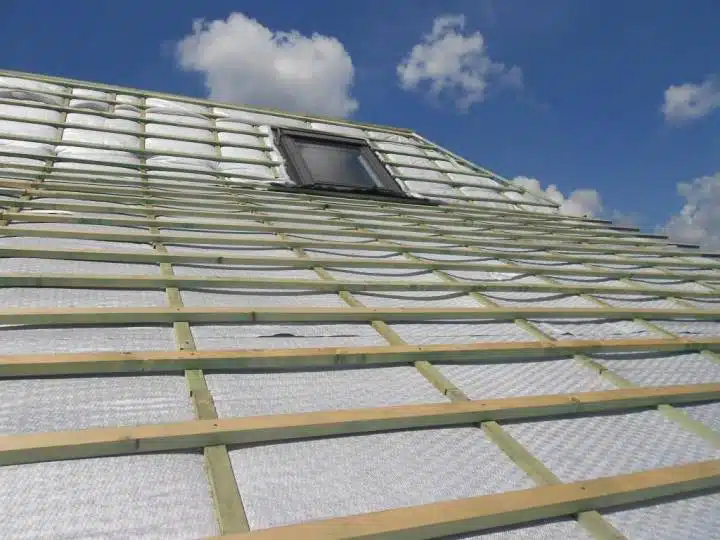Flat roof systems require durability, resistance to standing water, and a long service life. Among available options, membrane roofing has become a standard in both residential and commercial flat roof installations. This article outlines the performance benefits, material options, installation characteristics, and maintenance efficiency of membrane roofing systems.
Why Membrane Roofing Is a Preferred Solution for Flat Roofs
A professional membrane roofing service provides a watertight, flexible, and low-maintenance solution, especially on buildings with minimal roof pitch. These systems are engineered to handle weather exposure, thermal expansion, and pooling water more effectively than traditional asphalt-based coverings.
Types of Membrane Roofing Materials
- TPO (Thermoplastic Polyolefin) is a single-ply system with UV resistance and heat-welded seams.
- EPDM (Ethylene Propylene Diene Monomer) is a rubber-based system that’s highly resistant to ozone and aging.
- PVC (Polyvinyl Chloride) is a durable, chemically resistant material used in commercial settings.
- Each material suits different climates and usage needs due to unique performance characteristics.
Key Characteristics That Support Flat Roof Performance
Membrane roofing offers flexibility and durability even in extreme conditions. Seamless or heat-welded seams reduce the risk of leaks. These systems provide UV and chemical resistance and work well with insulation layers. Their lightweight structure also reduces stress on the building.
Adaptability to Building Types
These systems suit various property types, including modern residential homes, warehouses, industrial facilities, schools, offices, and public-use buildings.
How Membrane Roofs Compare to Traditional Systems
Compared to traditional built-up roofing or modified bitumen, membrane roofing offers better longevity and easier installation.
Installation Time and Labor
Membrane systems are generally quicker to install and require less labor than built-up roofs. Their lightweight materials make them easier to handle, and fewer layers reduce time on-site. This efficiency makes them cost-effective over time, especially for large-scale projects.
Thermal and Energy Performance
Membrane roofing can be paired with reflective surfaces or insulation layers to increase energy savings. TPO and PVC help reduce cooling loads by decreasing heat absorption. They’re compatible with polyiso or foam board insulation and can contribute to LEED points in commercial projects.
Practical Advantages in Maintenance and Repair
Membrane roofs are known for their minimal maintenance needs and simplified repair protocols.
Long-Term Durability
EPDM systems last 20 to 30 years. TPO and PVC can exceed 25 years with proper care. These materials are puncture-resistant and can support foot traffic around rooftop units.
Repair and Resealing Options
- Heat-welded patches are used for TPO and PVC systems.
- EPDM systems often rely on adhesive-backed repair kits.
- Surface recoating is an option to extend the life of any membrane system.
- Maintenance generally includes semi-annual inspections and occasional cleaning.
Design and Aesthetic Considerations for Modern Builds
While function remains primary, membrane roofs support minimalist and clean exterior aesthetics often seen in modern residential and commercial design.
Low Profile, Clean Appearance
Membranes offer a neat, uncluttered appearance with uniform texture across large surfaces. Integrated drain systems help reduce edge staining, and color options are available in PVC and TPO. They can be used with parapet walls, solar panels, or rooftop decks without compromising waterproofing.
Environmental and Lifecycle Considerations
Membrane roofing contributes to sustainability through recyclability, energy savings, and longer replacement intervals.
Eco-Friendly Roofing Choices
- TPO and PVC are recyclable at end-of-life.
- Their reflective surfaces improve indoor comfort during summer.
- These systems require less material during installation, reducing environmental impact.
Common Questions
How long do membrane roofs typically last? Most membrane roofs last 20–30 years depending on the material. TPO and PVC tend to have longer service lives with professional installation and periodic inspection.
Can membrane roofs be installed over an existing roof? Yes, membrane roofing can often be installed as an overlay if the existing surface is stable, dry, and free of structural damage. A moisture scan is usually required beforehand.
Are membrane roofs suitable for homes, or just commercial buildings? Membrane roofs work well on modern residential structures with flat or low-slope roofs. EPDM is especially common in residential applications for its flexibility and clean finish.
Do membrane roofs support solar panel installations? Yes. Many membrane systems are compatible with solar mounts, provided installers use non-penetrating supports or follow manufacturer-approved fastening methods.
What is the best membrane type for cold climates? EPDM performs well in cold weather due to its elasticity and resistance to cracking. TPO can also be effective with the right insulation layer underneath.
Conclusion
Membrane roofing provides a durable, energy-efficient, and low-maintenance solution for flat roof installations. Whether applied to residential homes or commercial facilities, membrane systems offer performance benefits that often surpass traditional alternatives. Their flexibility in design, installation, and maintenance makes them a practical choice for any flat roof project.
Hire a professional insulation contractor if you are seeking a long-term roofing investment, membrane systems—especially EPDM, TPO, and PVC—continue to set the standard in modern construction and retrofit projects.
Reviewer: Lily Johnson offered her feedback after reviewing this post. With 8 years in the spray foam insulation field, her suggestions centered around improving outreach to homeowners looking for quality insulation solutions.

